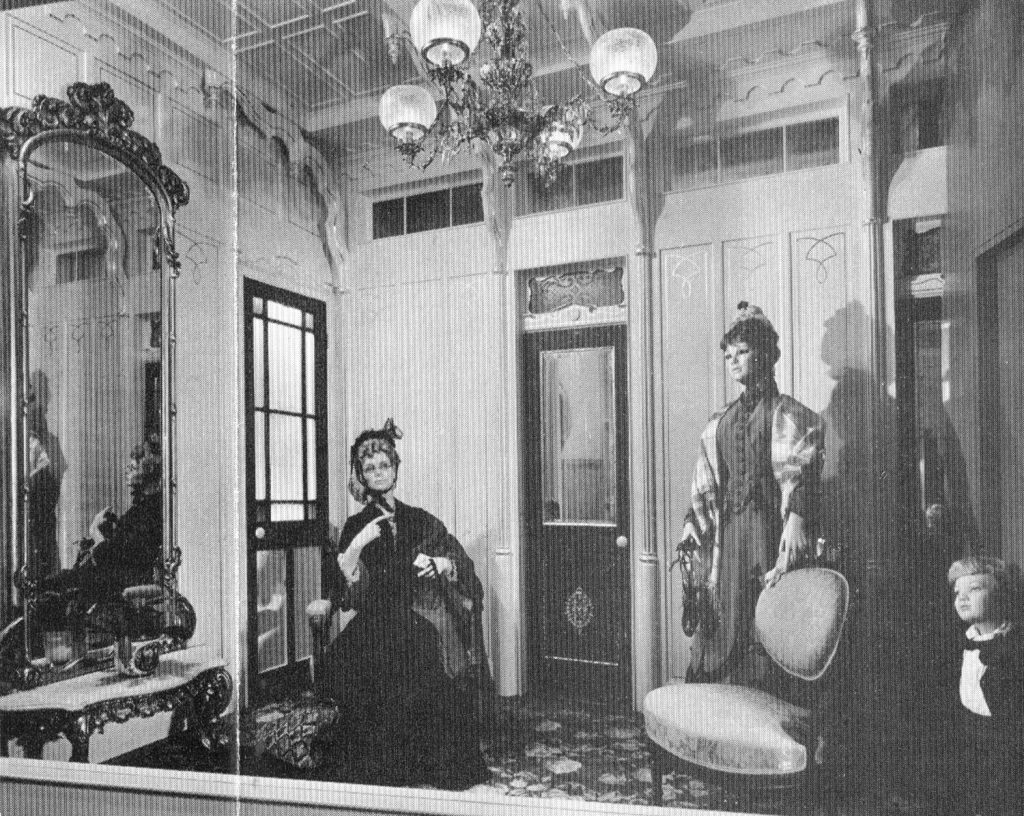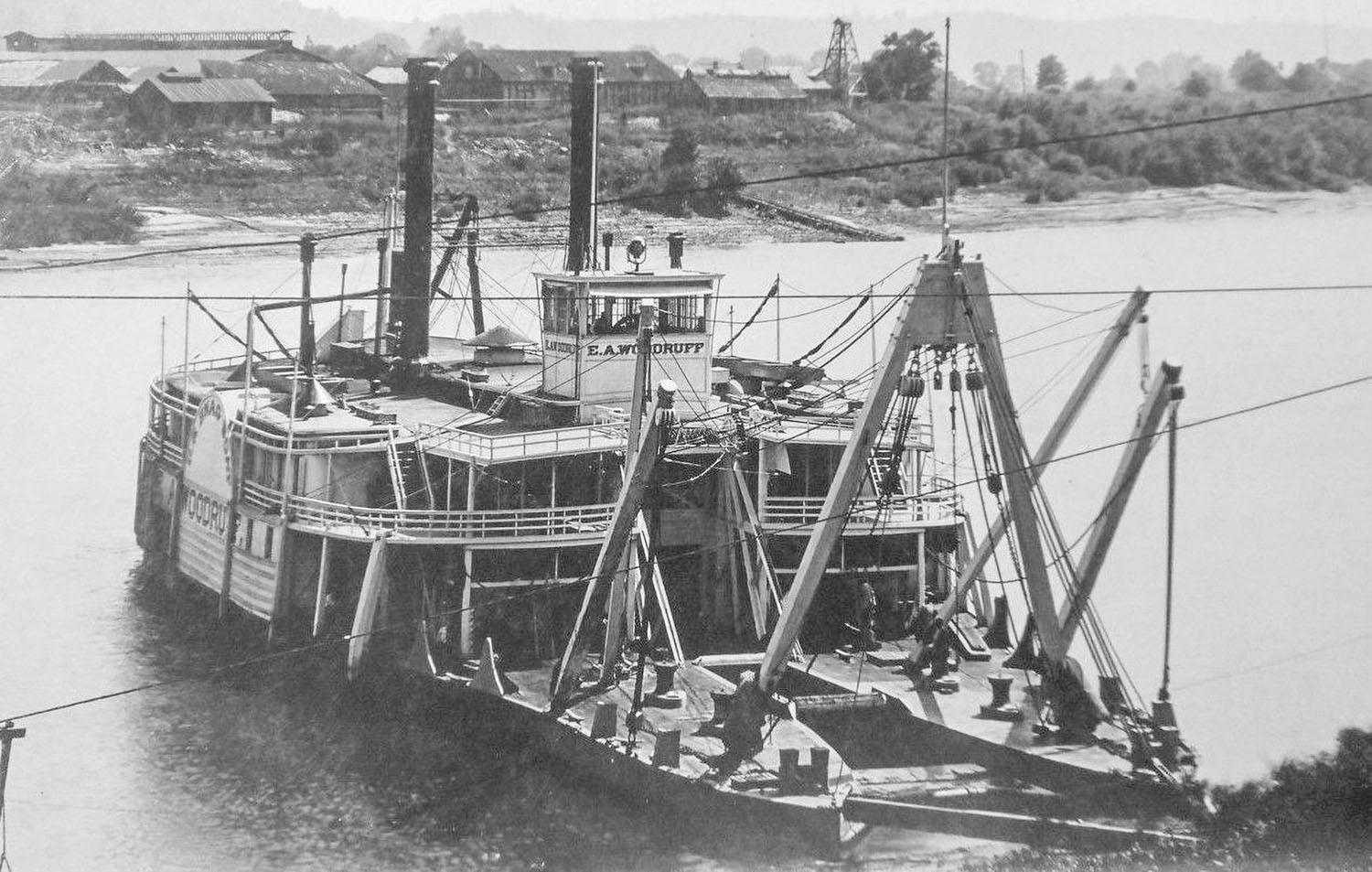The snagboat E.A. Woodruff was typical of the unique vessels operated by the U.S. government, known as “Uncle Sam’s Toothpullers,” which helped to keep channels cleared of debris.
The iron hull of the Woodruff was built in 1874 at Covington, Ky., by the Covington Iron Works and completed at Pittsburgh; the machinery was also installed there by the A. Hartupee Company.
The engines were duplex, 9 by 14 inches and 8 by 13 inches with a 6-foot stroke and a 20-inch bore. The 24-foot sidewheels contained buckets 10 feet, 8 inches long and 12, 18 and 22 inches wide, making the wheels oval. Five double-flue boilers supplied the steam.
The hull had two bows, but it was not a catamaran. A large “U” shape was cut into the hull to facilitate the hoisting of trees and hulks from the river bottom. Large beams supported the objects being removed, and up forward there was an A-frame with a hook at the tip that was dropped into underwater objects to break them or pull them up.
The hull was lengthened at the Cincinnati Marine Ways in 1885 to become 226 feet in length by 48 feet in width. The vessel operated the entire length of the Ohio River, with one of its first tasks being to remove the wreckage of the sidewheeler Pat Cleburne. Capt. George Rowley was the first master of the boat, succeeded by Capt. William Christian, who served for many years. The vessel normally carried a crew of 40 people.
Government records illustrate the cost of operations for the period of one year as follows: payroll, $21,020.74; coal, $2,962.61; food, $4,706.71; lubricating oil, $123.58; machinery, $87.87; laundry, ice, etc., $658.24; outfit renewals, $542.96; extraordinary repairs, $3,314.30; miscellaneous, $717.55; and office expenses, $90.00.
During 1912, the Woodruff serviced navigation lights. Records reveal that for this work the Lighthouse Service paid the Cincinnati Engineer office the amount of $8,705.31. Also disclosed was that it cost a net sum of $30,203.17 for the operations that year, in which the steamboat extricated 441 snags (weighing 3,176.37 tons) and cleared the river of 32 wrecked boats.

When the Woodruff was retired in 1922, Capt. Gordon C. Greene purchased the boat and dismantled it on the bank at Newport, Ky. After a period of service as a floating warehouse at the Fernbank Engineer Depot near Cincinnati, the vessel became a wharfboat at Louisville. When a new wharfboat was built for the Louisville & Cincinnati Packet Company, the remains of the Woodruff were sold to the Ohio River Company, which scrapped it at Catlettsburg, Ky.
The vessel’s cabin, installed by the Richardson Company at Pittsburgh, was along the lines of an ornate packet boat cabin. Capt. Jesse Hughes saved a number of the ornamental arches, which he later donated to the Missouri Historical Society at St. Louis. The relics were used in the construction of a replica riverboat cabin for the elegant new River Room gallery, which opened in May 1962, curated by Ruth Ferris and with generous support from Capt. Donald T. Wright, then publisher of The Waterways Journal.
Caption for top photo: The snagboat E.A. Woodruff at work on the Ohio River. (Keith Norrington collection)




